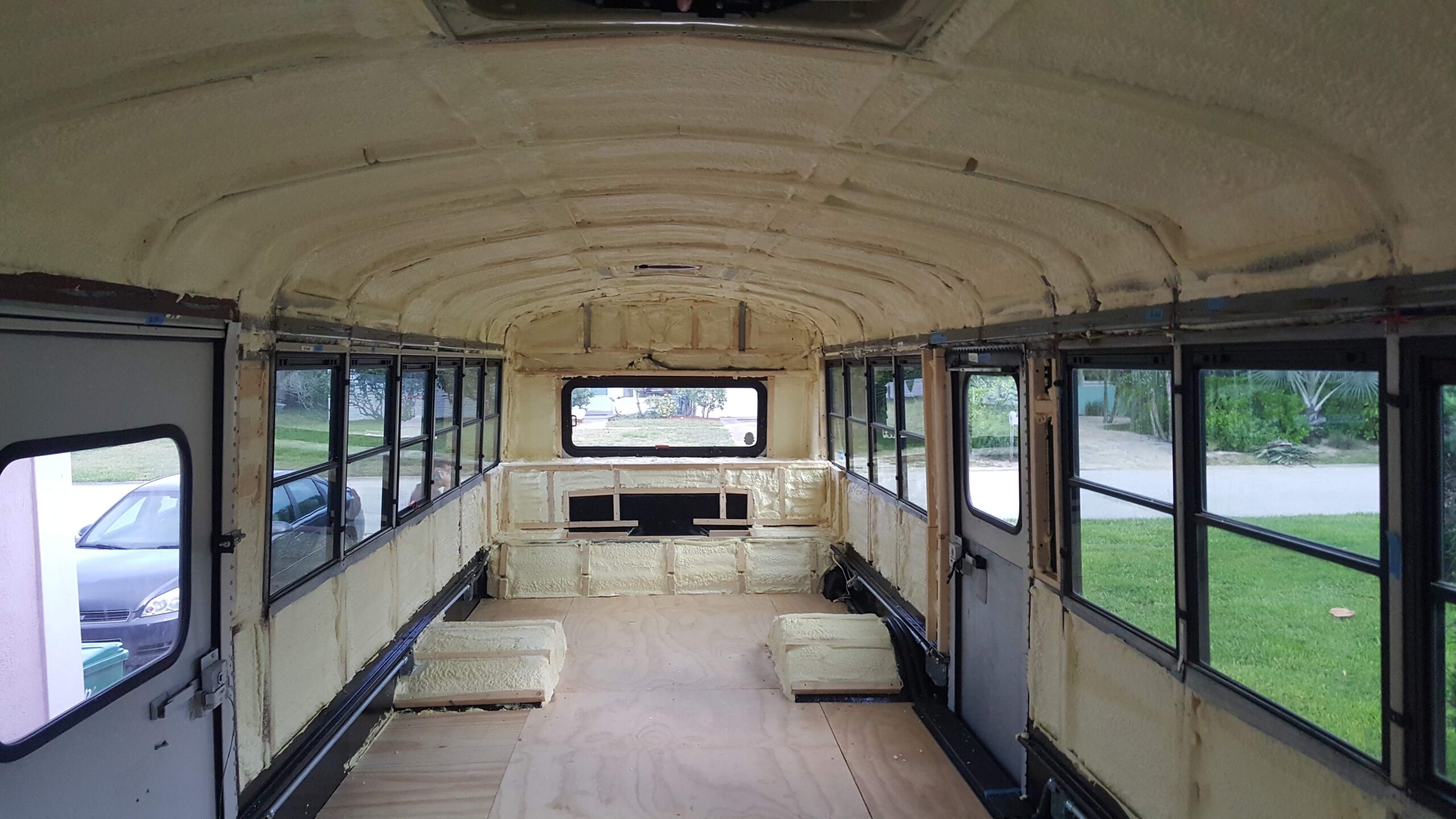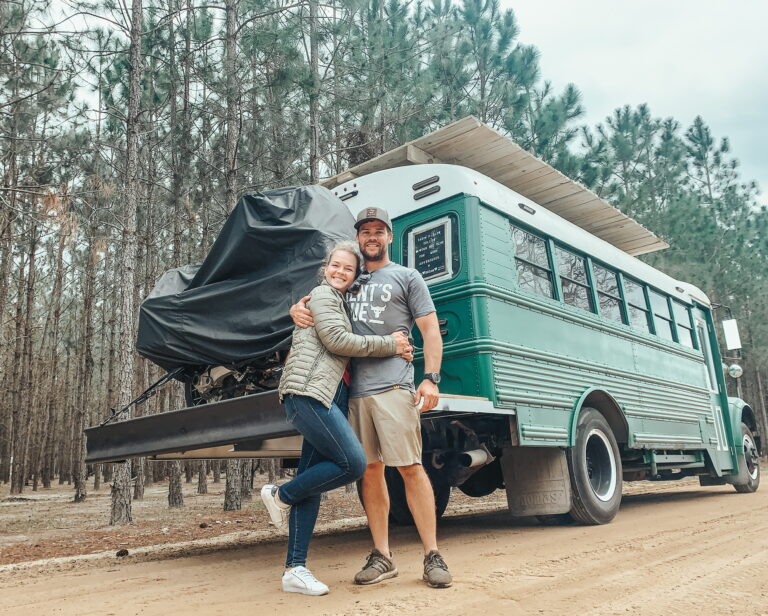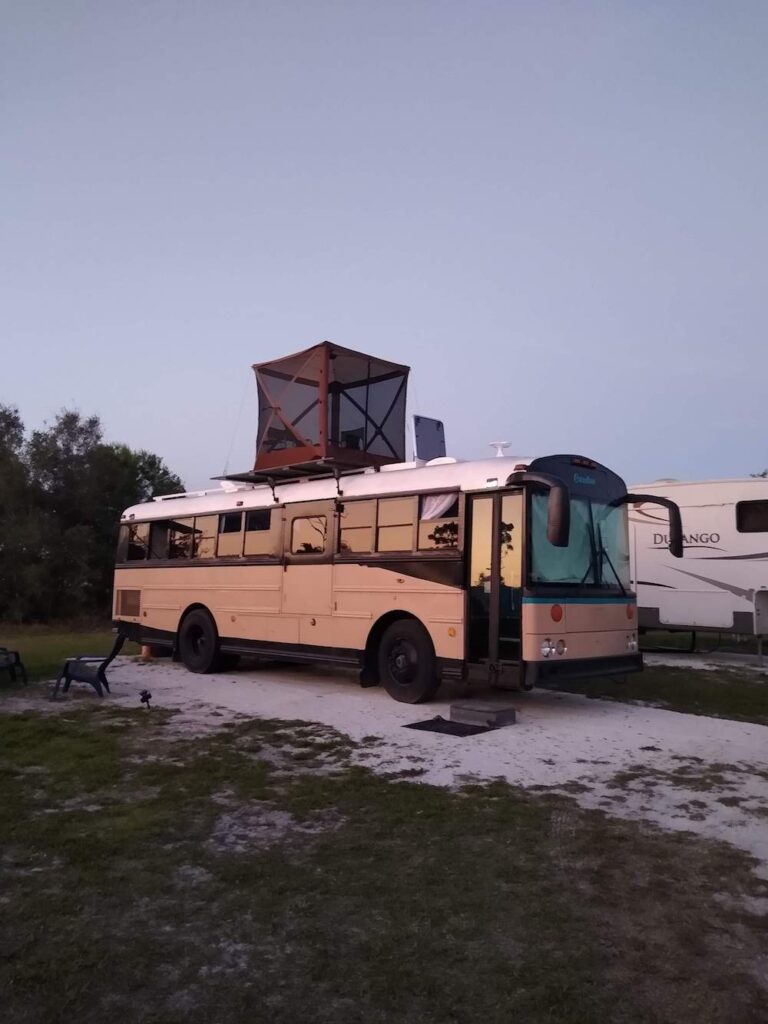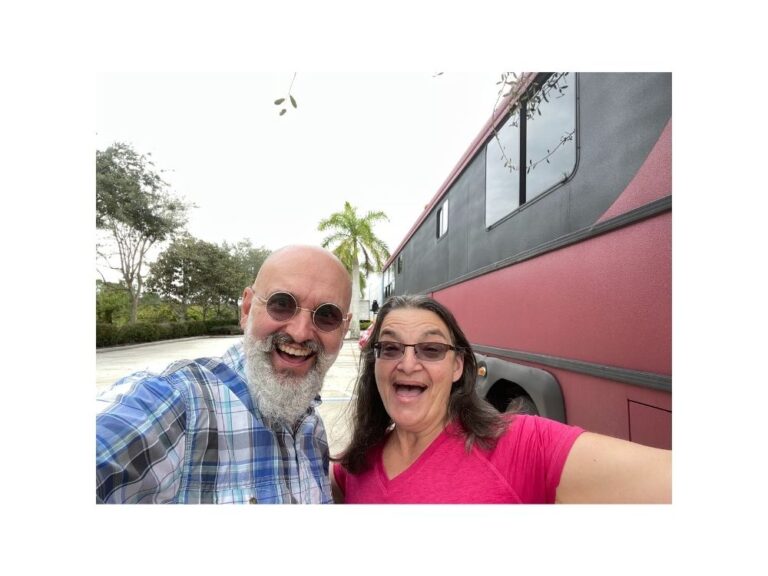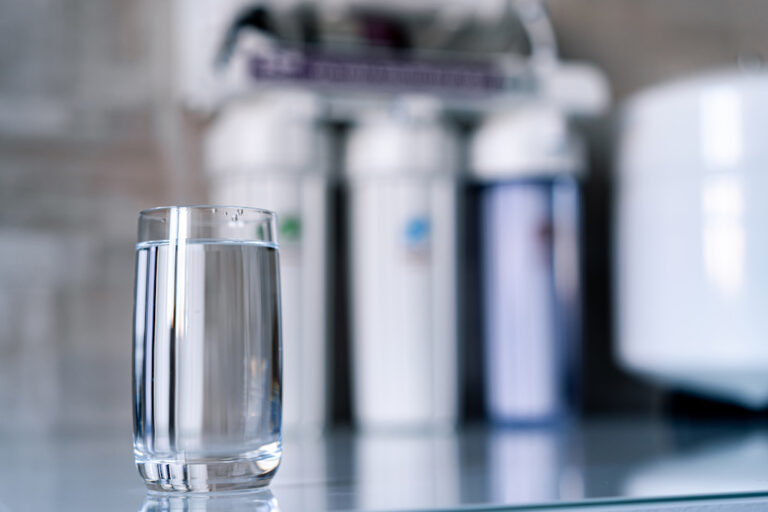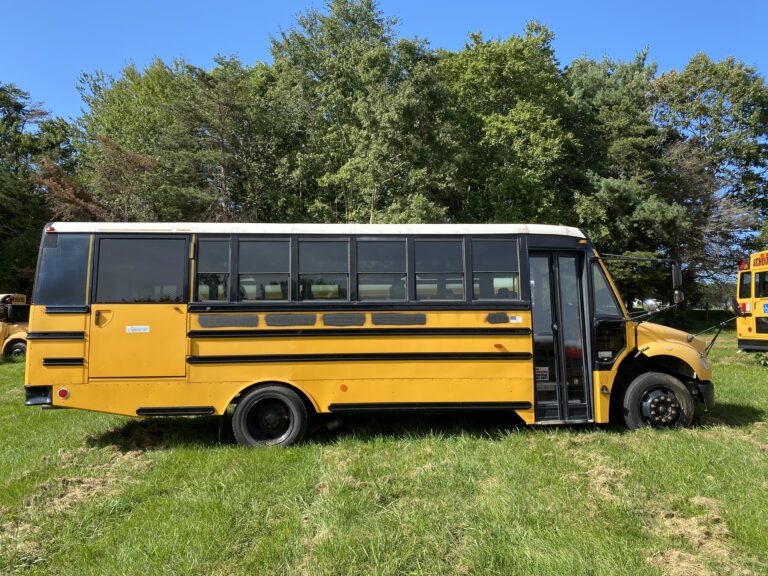Skoolie Insulation
Skoolie Insulation Alternatives
Let’s talk about skoolie insulation. Why should you insulate your skoolie? We can’t come up with any reasonably good reasons why not to insulate your tiny home on wheels, so we will discuss a few reasons why you should insulate your skoolie.
The obvious reason to insulate your bus is to keep you cool in the hotter climates and warm in the colder climates. Now, depending on how elaborate and luxurious you are going to build your mobile tiny house, it may affect how well you insulate.
Why Is Skoolie Insulation So Important?
If you plan on investing in some type of air conditioning or heating unit, you may want to help protect that investment in money and labor by insulating your bus in the most effective and efficient way.
No one wants to be cold and who could possibly like to be hot and sweaty when it is bedtime?
Also, good insulation will keep your metal walls from sweating and condensation accumulating inside your bus. Especially if you have an air conditioner and or a heating unit. Condensation occurs when warm air collides with cold surfaces, or when there's too much humidity in your bus.
When you factor in everyday activities like cooking (especially with propane), showering, and drying clothes can release warm moisture into the air inside your bus, then when that warm air hits those cold windows and cold metal skin, condensation is going to occur.
When it accumulates, this will cause rust, and even worse than rust, if you can imagine, it will cause mildew and mold spores.
The last thing you want in your tiny house is mold! Not only does mold make your home smell nasty, but it is also unhealthy to breathe.
Good insulation, along with a way to dry out the humidity inside of your bus, will prohibit this from being a problem for you.
How Do I Eliminate Condensation In My Skoolie?
A couple of ways of keeping the air inside of your bus virtually moist free (I had to find a reason to use the word moist) is to have:
1. Dehumidifier
A dehumidifier in your bus. Many air conditioners and heating units come with a dehumidifier already equipped. Our Pioneer mini split air conditioner/heat pump has a built-in dehumidifier.
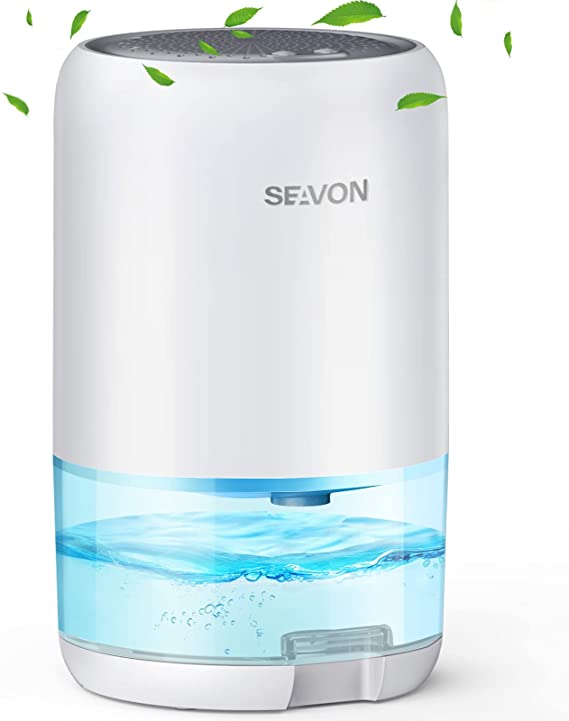
Pulling that wet moist air out of your bus will do wonders for you. The cool air feels crisper and warm air feels cozier.
2. Wood-burning Stove or Heater
A wood-burning stove or heater is a great way to dry the air in your bus. This may take up valuable floor space and square footage and is also a safety/fire hazard that many insurance companies will frown upon if they find out your skoolie is equipped with.
3. Limit your use of propane
Limit your use of propane for cooking and/or heating. Propane is notorious for releasing water vapor into the air. These water molecules will attract to cold surfaces where the gas will then transfer to a liquid.
4. Humidity Packs
Hang humidity packs around your bus. A humidity pack will typically last about 30 days. It will slowly fill with water as it attracts and captures water vapor.
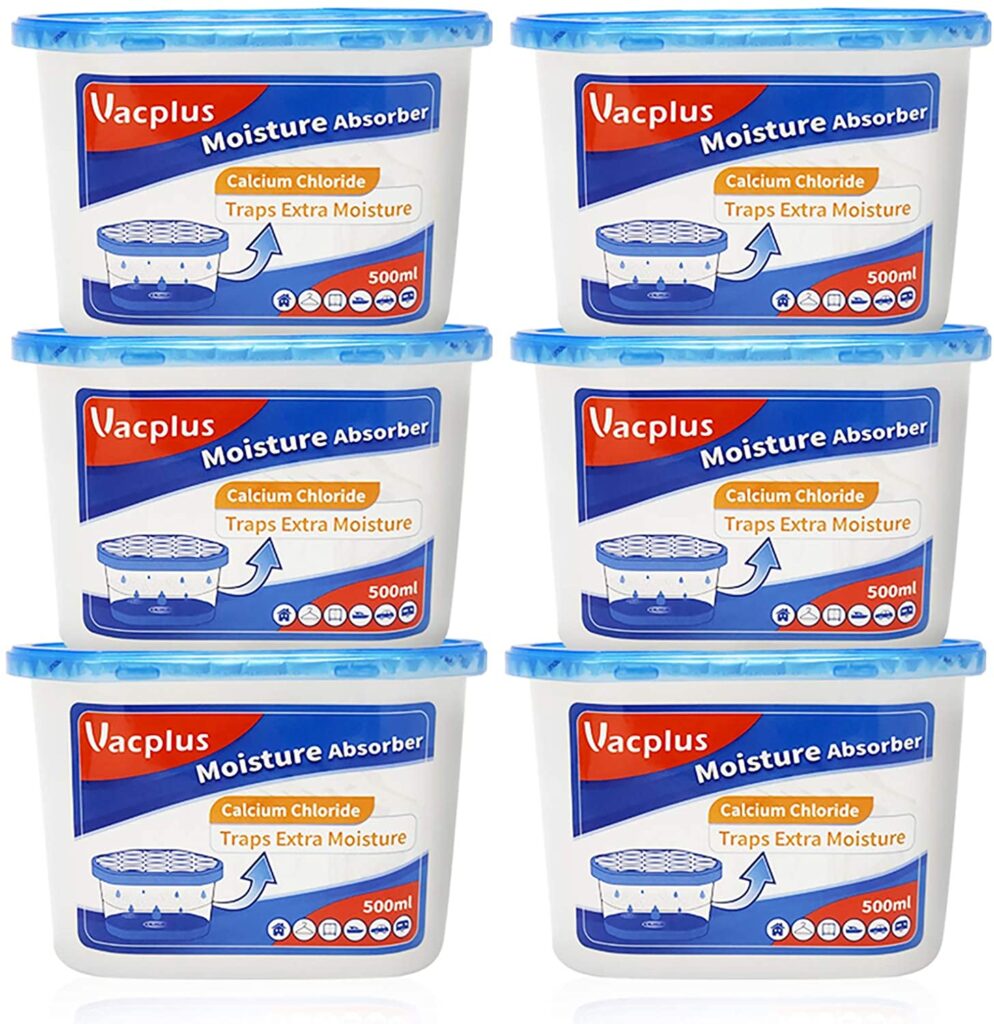
Depending on how much water vapor is in your home, it will dictate how often you will need to replace the bags.
5. Diesel Heater
Having a diesel heater in your bus will accomplish two things.
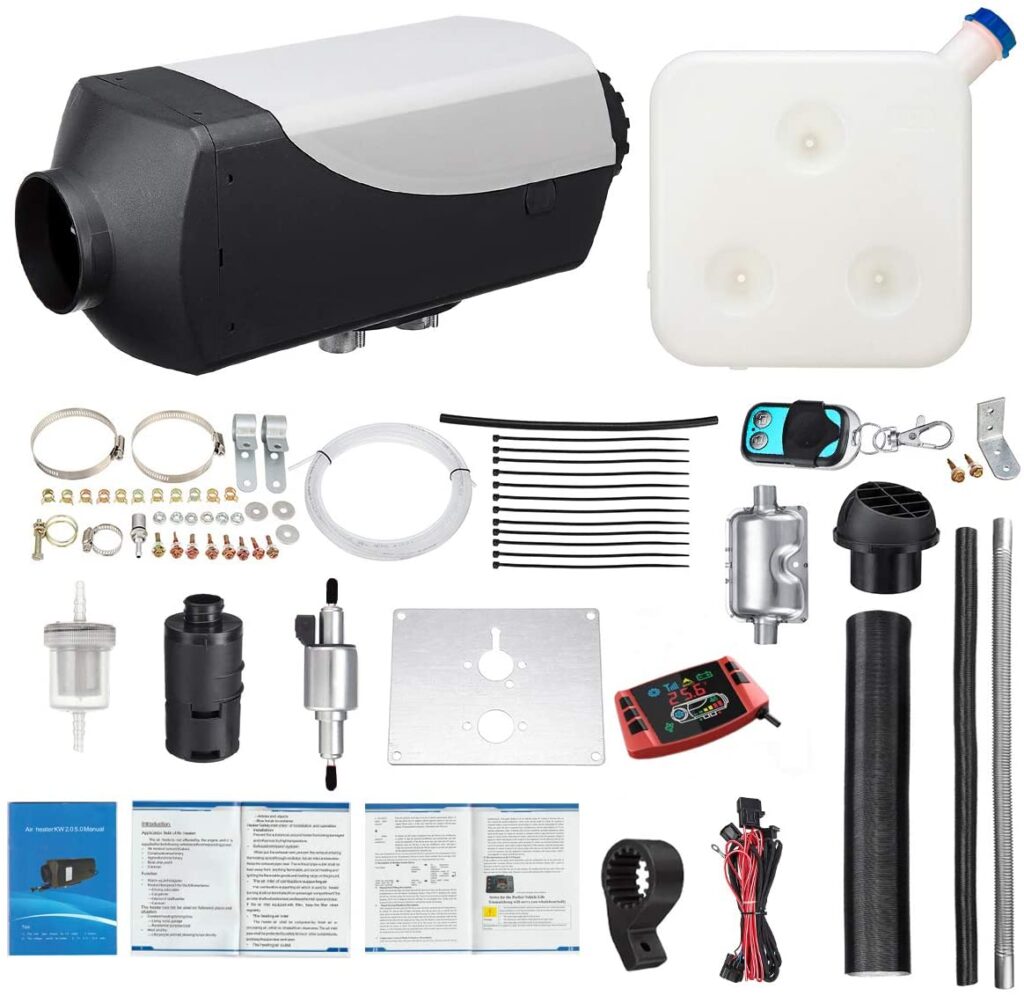
- It will dry the air in your bus and significantly reduce the humidity inside of your skoolie.
- It will make the inside of your skoolie toasty warm. One of the most efficient ways to heat the inside of your bus is with a diesel heater.
Different Types of Skoolie Insulation
Let’s talk about the different methods for your skoolie insulation. There are many arguments for and against the different types of skoolie insulation we are going to mention here.
Everyone has their arguments and very good reasons why they prefer one over the other.
We will discuss the different options we are familiar with, and it will be up to you to decide which best fits your needs.
Spray Foam Insulation
Spray foam skoolie insulation is a solid choice if you want to stay cool in the summer and warm in the winter. To be effective, it needs to be at a minimum of 2 inches thick consistently.
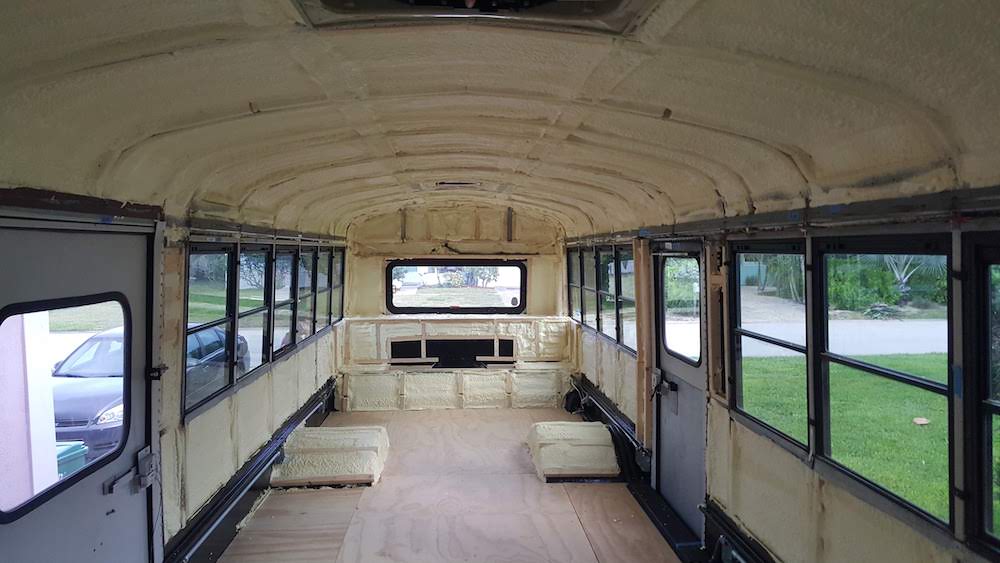
Spray foam for your skoolie insulation also makes for a great sound barrier between your living space and the outside world as well. It is dense and it eliminates air pockets that reverb sounds between your metal shell and your living space.
If you go this route, be sure it is a closed-cell spray foam and not open-cell spray foam. The reason you should have closed-cell instead of open-cell is that closed-cell has a higher R-value than open-cell foam, usually about 6.0 per inch.
This higher rating makes closed-cell foam better at keeping the heat in or out of a structure. Open-cell foams have an R-value of around 3.5 per inch.
Closed-cell spray foam is one of the best and most efficient insulation for a skoolie that we have found. It is probably inch for inch, the most expensive, but when it comes to comfort living inside of your bus, this is one area where we would recommend investing wisely.
You can have it professionally installed or you can order the kit online from Home Depot, Lowes, or Amazon. Depending on the size of your bus, how thick you plan on installing it, (most, including us, did 2” thick), and how much of the inside you want to insulate with it, it may be cheaper to have it professionally installed.
* Insulation Tip *
* A good tip, if you choose to have it professionally sprayed, is to ask the company to spray your bus after they have a large commercial job.
They will likely have left overspray that they would normally have waste and maybe enough to spray your bus. This is a good opportunity to negotiate a good price to get your skoolie insulated.
Wool fibers Insulation
For those who prefer more natural skoolie insulation, wool batting, or, as some have come to know in the conversion arena, Havelock Wool, is a very popular choice. It is not as an expensive inch for inch as spray foam, but the R-value is not as high either.
There are trade-offs for all of the alternatives, but this is good insulation that does not “off-gas” and has a decent R-value. The R-value of wool is about half that of closed-cell spray foam coming in at 3.0 and 3.3 per inch.

So, if you are seeking a skoolie insulation that is natural and has a decent R-value, Havelock sheep’s wool would be a good choice.
Rock Wool Insulation
Roc Wool is another viable alternative for skoolie insulation. With a 3.0 to 3.3 R-value, rock wool insulation has a slightly higher insulation value than fiberglass and is almost identical to Havlock wool.
Rock Wool, however, is not wool at all. It is a by-product of basalt and slag. Basalt is a form of volcanic rock, and slag is a by-product of steel and copper. The minerals are melted and spun into fibers to make it into an insulation form.
*Insulation Tip*
Be aware and warned, rock wool can be a health hazard. It, like asbestos, can be harmful to your respiratory system.
Fiberglass Insulation
Put the Pink Panther in your bus. Fiberglass has an R-value of approximately 2.2 to 2.7 per inch of thickness. Slightly lower than wool fiber and less expensive. It is not as easy or pleasant to work with, especially when stuffing it into small and tight areas.
If you have ever dealt with fiberglass you know how itchy and unpleasant it can be.
Foam Board Insulation
Foam board or sometimes referred to as rigid foam insulation is a very popular choice for insulating skoolie conversions. It has a good R-value and is relatively inexpensive. Polyisocyanurate, also known as polyiso, has the highest R-value per inch at R-6.5 to R-6.8 of any rigid foam insulation.
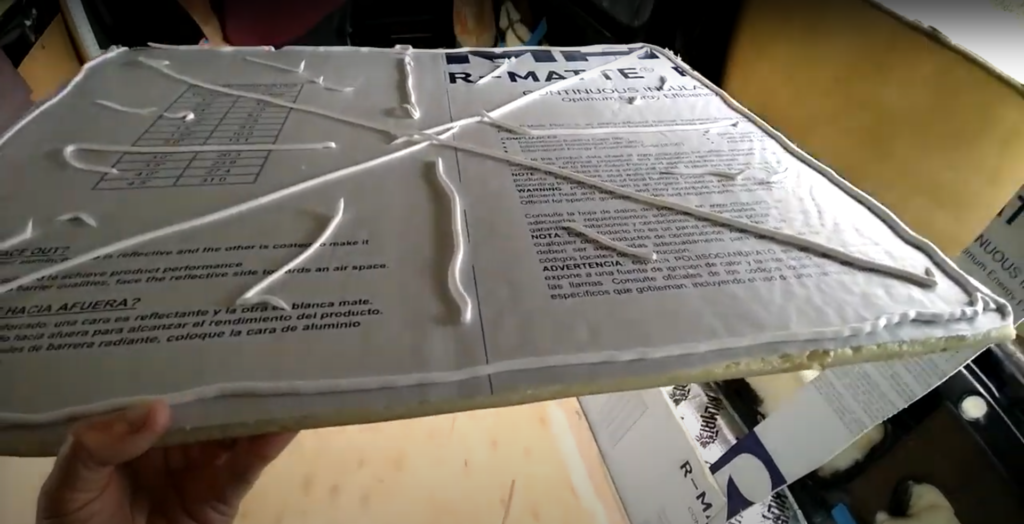
Factory insulation
There is always of course the option of sticking with the OEM insulation that was installed on your bus when it was manufactured. As we have mentioned earlier, this insulation is not meant or intended for long-term living conditions in extreme temperatures.
Remember, a school bus was meant to deliver our children to and from school with approximately a 30-60 minute bus ride at best.
If any of you has ever ridden in a school bus in Florida in September or May in the afternoon you know, if you can remember, how hot and muggy that ride home was. It’s the same thing for kids up North.
You know you kept your jacket and coat on during the winter months of riding in that school bus.
The factory insulation is worth about as much as it weighs, which is not very much at all.
For our bus, this is what we did. We had closed-cell spray foam installed in the ceiling, and walls as well as the front and rear caps. Spray foam was chosen for a few different reasons, even though we would prefer to have wool fibers due to their natural and organic properties.
We like the spray foam primarily for its solid R-value. We want to “chase 70 degrees” around the country, but also know realistically that we are going to be in some warm and cold climates, and want to stay as comfortable (as well as our pups) as possible.
Also, the spray foam makes for a great sound dampening insulation for outside noises and keeping inside noises muffled as well.
Spray foam insulation is a great sealant to any holes that are gaps in your bus. So, this makes for a good (not full-proof as we have not tested it personally) but good prevention for minor water leaks.
We have been very impressed with our insulation so far.
Skoolie Insulation – Floor
There aren’t many things about bus life or skoolie life more frustrating or uncomfortable than having cold feet. I think that feeling goes for anywhere you live though.
Who likes cold piggies? Not us! We like our feet to feel cozy and warm, regardless of the outside temperatures. Having cold feet is one thing we have struggled with within our first two DIY conversions so far.
Our first bus had an inch of foam board insulation underneath ¾ inch plywood. No tile flooring, just painted and polyurethaned plywood. It looked great, but when it was really cold outside, our floor was pretty doggone cold too!
When we built our van conversion, we did the same thing to the floor thinking it would be better since the floor was closer to the ground.
Nope!
Our floor is too cold for our bare feet when winter comes.
In our current skoolie build, we are making a slight change to how we insulate your floor.
Stay tuned for those details…
Rigid Foam Board
Foam board is a great product to insulate your skoolie floor. It doesn’t matter whether you are converting and building out a skoolie, a van, a box truck, or anything else that rolls, foam board makes for a solid and reliable insulated subfloor.
If you cut the foam board into large blocks and can fit it wall to wall, then there is no need to build and construct a subfloor frame out of wood.
The foam board is rigid enough for when you lay down your plywood floor, it is solid and should move around. We have already discussed the insulation value earlier in this blog.
Radiant Heated Flooring
This is a great concept and in our opinion, not used often enough, especially for those who tend to travel and take their skoolie to the colder climates.
Having a radiant heated floor may cost a little more than just the plywood and require a little more labor to install, but your feet and toes should stay warm and toasty in the cold temperatures.
We can get into the specifics of how to install different types of radiant floors in another post.
Skoolie Insulation – Windows
One of our favorite features of a skoolie is the 360-degree views from all of the windows. To be able to look out in just about any direction and see the beautiful landscape of the mountains, ocean, desert or forests is wonderful.
There is a catch to having this magnificent view all day long though/
Windows are heat and cool air’s worst enemy. It doesn’t matter whether you have insulated your skoolie to the nines with spray foam, havelock wool, or any number of insulation properties, you are going to lose heat and cool air with the windows.
There are some ways to minimize the loss of heat and your treasured air-conditioned cool air.
Let’s take a look at a few that have proven to be reliable.
Reflectix
Reflectix is a thin but proven and reliable reflective fabric that reflects the sun rays keeping the inside of your bus cool.
When the heat is on inside of the bus, it reflects the warm air back into the interior of the bus and reduces the amount of heat loss through the windows.
This is basically the same material you see in car windshields during the summer. The intent of the design of reflectix is to prevent the sun from directly warming the air inside of your vehicle.
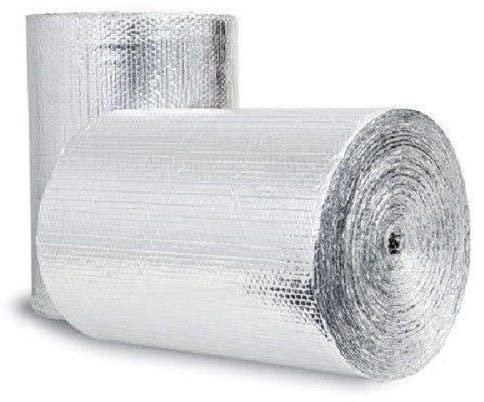
Reflectix does not disintegrate, collapse or compress. It will, if installed properly, reflect 97% of the sun’s radiant heat while emitting only 3% of the heat.
Thermal Curtains
Having thermal curtains in your skoolie is another efficient and cost-effective way to keep you cool or warm depending on the weather.
Not only will it allow you to keep your skoolie warm or cold, they are also great for keeping light out of your bus when you are wanting it dark and cozy on the inside.
Window Tint
Your skoolie may come with tinted windows already. Having tinted windows is another great way to reduce the amount of radiant heat and UV rays from the sun creeping into your bus and heating up the air.
Thomas busses are known for having the windows pre-tinted which is another reason we love the Thomas bus.
We like to add extra tint to our windows. We tinted our Thomas bus windows a little darker, as well as our Sprinter van conversion, and will be doing so on our current Thomas bus build.
Besides the fact that the extra window tint will keep the inside of your skoolie cooler in the sunlight and warmer climates, it is great for keeping your life a little more private from the outside world.
The darker your tint, the harder it is to see the inside of your bus from the outside of course.
Skoolie Insulation – Front Cab Separation
The front of your bus is often an area of the bus that is somewhat ignored and looked over when it comes to design and climate preservation.
Think about it. You have a huge windshield, the driver’s windows and the skoolie doors, that we all know are not sealed very well.
Anyone who has ridden or driven a skoolie knows the air and wind noise coming from those folding doors.
Putting reflectix in the windshield and driver side windows is a good way to reflect some of the hot sun rays from heating up the inside of your skoolie.
But, there are some other ingenious ways to keep that area of the bus from ruining all of your hard efforts to keep your skoolie warm or cool.
Sound and Thermal Insulating Blanket
Hanging a sound and thermal insulating blanket between the living area of your skoolie and the driver’s cockpit area will definitely make a difference in keeping your living area warmer in the winter.
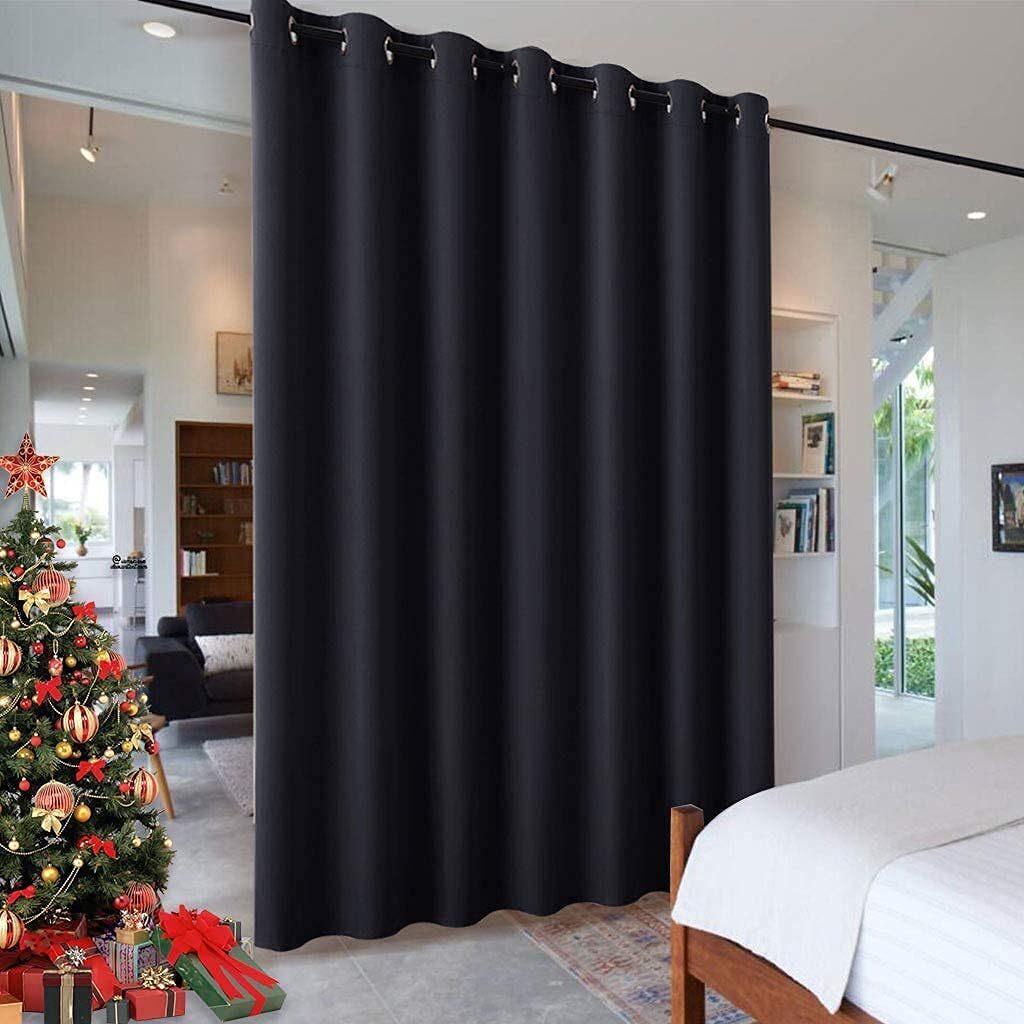
Not only will this create an insulating barrier between your skoolie cab and living area, it will also create a sound barrier as well.
Wall
If you really want to keep the living area of your skoolie separated from the driving area then just build a wall.
This is not something that we have seen very often in a skoolie conversion. If you are wanting to increase your skoolie insulation efficiency, we can not think of a better way than putting a wall up here.
We did that in our Thomas HDX and it made such a huge difference. We went through winter in Colorado and summer in Florida with it.
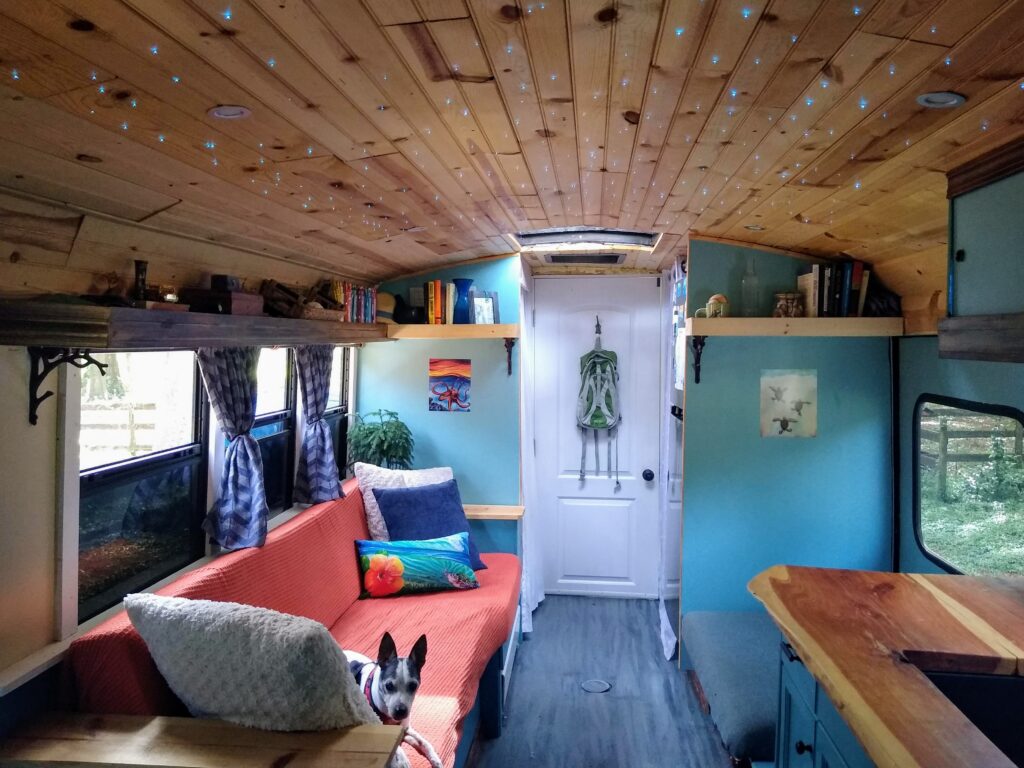
Besides the insulation benefits a wall provides, it also provides a great security barrier from the cab to the living area as well. By putting a wall with a door, you can add a lock or even a deadbolt to the living area.
We loved having this wall with an entry door to our skoolie, Caroline. It created a space that was not only energy-efficient and more secure, but it just felt more like home.
Wrap Up to Skoolie Insulation
Skoolie insulation may very well be one of the most important aspects of your DIY conversion. It doesn’t however, have to be one of the hardest or most laborious.
Just like with building a house, setting the foundation square and level sets the premise for a strong and confident build. Having your skoolie insulation done properly for your needs and budget sets the tone for the remainder of your conversion.
There are some things you may need to cut corners on to meet time goals and budget goals, but your skoolie insulation should not be one of them.
We would love to hear how you are planning or already insulated your skoolie. Leave us a comment below.
We look forward to connecting with you!
Don & Nat

FTC affiliate disclosure:
We only recommend products we would use ourselves and all opinions expressed here are our own. This post may contain affiliate links. If you purchase a product, at no additional cost to you, we may earn a small commission.

